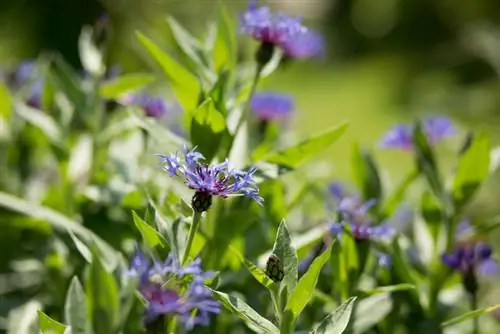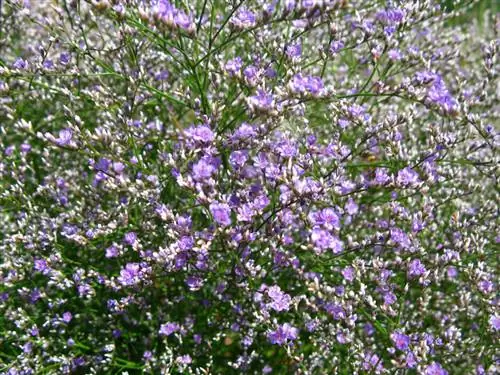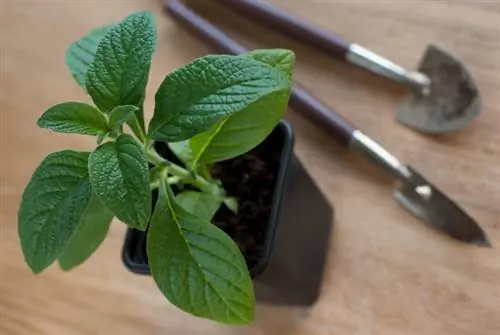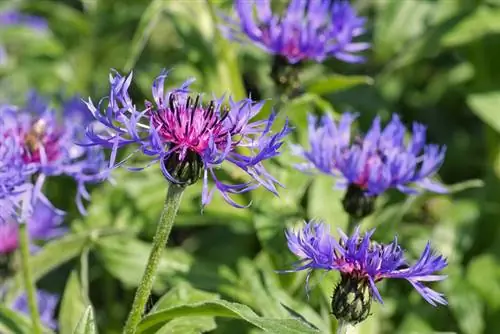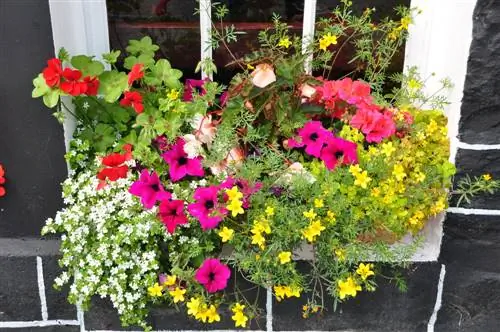- Author admin [email protected].
- Public 2023-12-16 16:46.
- Last modified 2025-01-23 11:20.
Mountain knapweeds are an indispensable part of a natural garden or a cottage garden. With their delicate pink or blue flowers, the perennials also provide a real summer feeling in the pot. The mountain knapweed requires very little care.
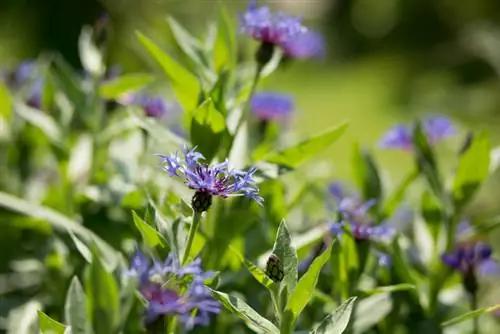
How do I properly care for a mountain knapweed?
Caring for the mountain knapweed includes regular watering with rainwater, fertilizing in spring and autumn, removing dead parts of the plant, pruning in spring and winter protection with leaves, compost or brushwood. It prefers sunny locations and is sensitive to waterlogging.
How to water the mountain knapweed?
Mountain knapweeds should never dry out completely, but they cannot tolerate waterlogging at all. Water regularly on hot days, especially if you care for the perennial in a pot.
Use rainwater if possible, as mountain knapweeds react to calcareous tap water with color changes.
How often does it need to be fertilized?
Provide nutrients when planting by mixing mature compost or horn shavings into the potting soil. Later, two fertilizations - once in spring and once in autumn - are completely sufficient.
When is the best time to cut the mountain knapweed?
Continuously cut off all withered and dried parts of the plant during the flowering period. In autumn you must not cut back the perennial so that the plant juices can retreat into the roots.
Pruning only takes place in spring, before the mountain knapweed sprouts again. Then you can remove all parts of the plant down to the base.
What diseases and pests can occur?
- Downy mildew
- Root rot
- Spider mites
Mountain knapweeds are very robust in a favorable location. Most problems occur when the humidity is too high or waterlogging.
You can combat downy mildew with a solution of one part fresh milk and ten parts water. You can spray plant parts affected by spider mites with nettle broth or soapy water.
If the plant smells rotten, root rot may be responsible. It occurs when the soil is too wet. In most cases, only removing the entire plant helps with root rot.
Is winter protection necessary?
Mountain knapweeds are hardy. Nevertheless, light winter protection made from leaves, compost or brushwood is recommended, especially if you have recently planted the perennials.
When caring for it in a pot, place the pot on an insulating surface and wrap the perennial with fleece, bubble wrap or burlap. Place the pot in a sheltered corner on the patio.
Tip
So that mountain knapweed flowers really come into their own, you should plant them in groups. Look for a location that is as sunny as possible, as flowers rarely develop in shady places.

